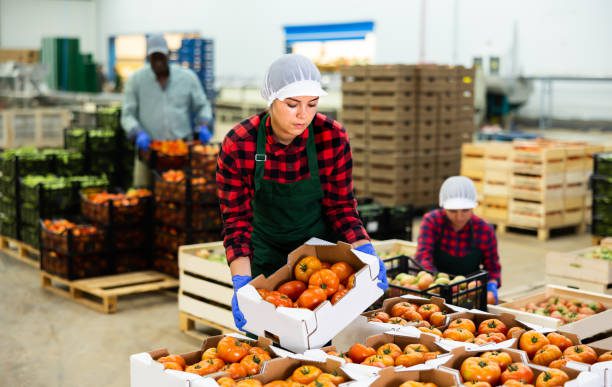Crop storage and technique is a critical aspect of agriculture that plays a significant role in ensuring food security, preserving quality, and maximizing the economic returns for farmers. Proper storage techniques are essential for maintaining the nutritional value, taste, and safety of harvested crops, extending their shelf life, and minimizing post-harvest losses.
The primary objective of crop storage is to protect harvested produce from various detrimental factors such as pests, diseases, and environmental conditions. In many regions, crops are harvested during a specific season, resulting in a surplus that must be stored for consumption or sale throughout the year.
Without adequate storage facilities, farmers risk losing significant portions of their harvest due to spoilage or infestations. Consequently, effective storage systems are paramount for stabilizing food supply and prices, particularly in regions prone to fluctuations in production due to climate conditions or market demand.
Proper crop storage is not just about preventing losses; it also enhances food safety. Many crops, particularly grains and legumes, can harbor harmful microorganisms if not stored correctly.
Conditions such as high humidity and inadequate ventilation can promote the growth of molds and bacteria, leading to foodborne illnesses. By implementing proper storage practices, farmers can significantly reduce the risk of contamination and ensure that the food reaching consumers is safe and healthy.
In addition to food safety, effective crop storage is crucial for maintaining the nutritional quality of food products. Many nutrients in crops, such as vitamins and minerals, can degrade over time if stored improperly. Exposure to light, air, and moisture can lead to nutrient loss, making it essential to protect crops from these elements.
For example, grains stored in airtight containers are less likely to lose their nutritional value than those stored in open bags that are exposed to air and humidity. Thus, investing in proper storage not only preserves the economic value of the crops but also contributes to the overall health and well-being of consumers.
Furthermore, crop storage has significant economic implications for farmers and the agricultural sector as a whole. Farmers can achieve better prices for their crops by storing them strategically, as they can sell their produce during times of higher demand.
This ability to time the market can lead to increased income and improved livelihoods for farming families. Additionally, by reducing post-harvest losses through effective storage, farmers can contribute to overall agricultural productivity and sustainability.
However, despite its importance, crop storage faces numerous challenges that can hinder its effectiveness. One of the most pressing issues is the lack of adequate storage facilities, particularly in developing countries.
Many smallholder farmers lack access to modern storage technologies, relying instead on traditional methods that may be inefficient and less effective. This disparity can lead to significant post-harvest losses, exacerbating food insecurity and economic instability in vulnerable populations.
Another challenge is the variability in storage conditions required for different crops. Different crops have unique storage needs based on their moisture content, temperature tolerance, and susceptibility to pests and diseases.
For instance, while some grains may thrive in cool, dry environments, others, like fruits and vegetables, require more specific conditions to remain fresh. This variability makes it difficult for farmers to implement a one-size-fits-all approach to crop storage, leading to potential losses if the specific needs of each crop are not met.
Pest infestations also pose a significant challenge in crop storage. Inadequate storage facilities can create ideal conditions for pests, such as insects and rodents, to thrive. These pests can cause extensive damage to stored crops, leading to increased waste and economic loss.
Effective pest management strategies are necessary to protect stored crops, which can be particularly challenging for farmers with limited resources or knowledge of integrated pest management practices.
In addition to physical storage challenges, there are also economic and infrastructural barriers that affect crop storage. Many farmers lack the financial resources to invest in proper storage technologies or the infrastructure necessary for effective storage.
Government policies and investment in rural infrastructure play a crucial role in addressing these issues, but in many regions, there remains a significant gap between the need for storage solutions and the available resources to implement them.
Another critical factor in crop storage is the impact of climate change. Changing weather patterns, including increased temperatures and unpredictable rainfall, can affect both the harvest and storage of crops.
Higher temperatures can accelerate spoilage, while increased humidity can promote mold growth. Farmers must adapt their storage practices to account for these environmental changes, which can require additional resources and knowledge. Moreover, education and training on best practices for crop storage are essential for maximizing the benefits of any storage solution.
Many farmers may not be aware of the most effective storage techniques or the importance of maintaining optimal conditions for their crops. Providing training and resources to farmers can help them make informed decisions about crop storage, ultimately leading to better food security and economic outcomes.
Read Also: Various Types Of Fruits And Their Nutritional Value
Effective Crop Storage Methods and Techniques
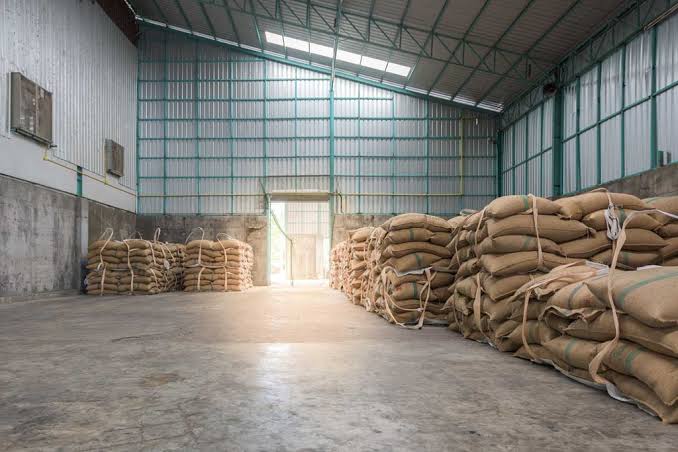
1. Traditional Storage Techniques
Traditional storage methods have been used for centuries and are often simple, low-cost solutions that can be effective for small-scale farmers. These methods include:
1. Granaries: Granaries are structures specifically designed for storing grains. They are typically elevated to prevent moisture absorption from the ground and may have ventilation systems to reduce humidity. Granaries can vary in size and complexity, from simple wooden structures to more elaborate designs made of brick or stone.
2. Clay Pots and Jars: In many regions, farmers store grains and seeds in clay pots or jars. These containers are often sealed to prevent pest entry and moisture absorption. While effective for small quantities, they may not be suitable for larger harvests.
3. Thatched Roofs and Elevated Platforms: Farmers often use elevated platforms or thatched roofs to store crops like yams or cassava. This method allows for air circulation and reduces moisture accumulation, which helps prevent spoilage.
2. Controlled Atmosphere Storage
Controlled atmosphere (CA) storage is a more advanced technique that regulates temperature, humidity, and gas composition to prolong the shelf life of stored crops. This method is particularly beneficial for fruits and vegetables sensitive to ethylene gas, which can accelerate ripening and spoilage.
1. Temperature Control: Maintaining a consistent, cool temperature is essential in CA storage. Low temperatures slow down the metabolic processes of stored produce, extending their freshness. Refrigeration units or cool storage rooms equipped with insulation can help achieve this.
2. Humidity Control: Managing humidity levels is critical for preventing moisture-related spoilage. High humidity can lead to mold growth, while low humidity can cause produce to dry out. Humidifiers or dehumidifiers can be used to maintain optimal humidity levels.
3. Gas Composition Control: Adjusting the levels of oxygen, carbon dioxide, and nitrogen in the storage atmosphere can slow down the ripening process. By reducing oxygen levels and increasing carbon dioxide levels, the respiration rate of fruits and vegetables can be minimized, preserving their quality.
3. Refrigerated Storage
Refrigeration is a widely used method for storing perishable crops such as fruits, vegetables, dairy products, and meat. This method relies on maintaining low temperatures to slow down spoilage and extend shelf life.
1. Walk-in Coolers and Freezers: Commercial operations often utilize walk-in coolers or freezers to store large quantities of perishable goods. These facilities can be adjusted to maintain specific temperature and humidity levels, ensuring optimal storage conditions.
2. Refrigerated Transport: For crops that need to be transported long distances, refrigerated trucks or containers are essential. This method ensures that produce remains fresh during transit, reducing spoilage rates.
4. Vacuum Packaging
Vacuum packaging involves removing air from packaging materials before sealing, creating an airtight environment that inhibits the growth of spoilage microorganisms and oxidation. This method is commonly used for storing grains, nuts, dried fruits, and other products.
1. Extended Shelf Life: By reducing exposure to oxygen, vacuum packaging significantly extends the shelf life of stored crops. This method is especially useful for products sensitive to spoilage, allowing for longer storage without compromising quality.
2. Space Efficiency: Vacuum-sealed packages take up less space than traditional packaging, making them easier to store and transport.
5. Modified Atmosphere Packaging (MAP)
Similar to vacuum packaging, modified atmosphere packaging (MAP) involves altering the gas composition within packaging materials to extend shelf life. This method is particularly beneficial for fresh produce.
1. Ethylene Control: MAP can control ethylene levels, a natural gas produced by fruits that accelerates ripening. By reducing ethylene concentrations, the ripening process can be delayed, allowing for longer storage periods.
2. Enhanced Freshness: By controlling oxygen and carbon dioxide levels, MAP helps maintain the freshness and quality of produce, making it ideal for shipping and retail.
6. Drying and Dehydration
Drying and dehydration are effective methods for preserving crops by removing moisture, which inhibits the growth of spoilage organisms. This method is commonly used for fruits, vegetables, grains, and herbs.
1. Sun Drying: This traditional method involves placing crops in direct sunlight to remove moisture. While cost-effective, it requires favorable weather conditions and careful monitoring to prevent spoilage.
2. Mechanical Drying: Commercial drying equipment, such as dehydrators or hot air dryers, provides controlled drying conditions that ensure consistent results. This method is faster and more efficient than sun drying, reducing the risk of spoilage.
7. Canning and Fermentation
Canning and fermentation are preservation methods that enhance the shelf life of various crops while adding unique flavors and nutritional benefits.
1. Canning: This method involves sealing crops in airtight containers and heating them to kill spoilage microorganisms. Canned vegetables, fruits, and sauces can last for years without refrigeration.
2. Fermentation: Fermentation is a natural preservation method that uses beneficial microorganisms to convert sugars into acids, alcohol, or gases. This process not only preserves crops but also enhances their flavor and nutritional content. Examples include pickled vegetables, sauerkraut, and yogurt.
8. Pesticide and Chemical Treatments
In some cases, farmers may use approved pesticides or chemical treatments to protect stored crops from pests and diseases. These treatments can help reduce spoilage and extend shelf life but should be used judiciously to minimize health risks.
1. Insecticides and Fungicides: These chemicals can protect crops from insect infestations and fungal infections during storage. It is essential to follow safety guidelines and regulations when using these products.
Strategies for Preserving Crop Quality During Storage
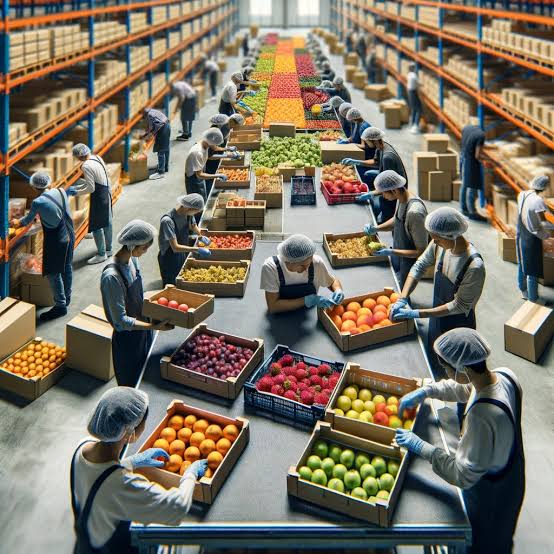
Preserving crop quality during storage is crucial for minimizing losses, ensuring food safety, and maintaining market value. Effective storage strategies help retain the nutritional value, flavor, and safety of harvested crops. To achieve this, farmers and stakeholders can implement various strategies tailored to the specific requirements of different crops.
1. Control the Storage Environment
Controlling the storage environment is one of the most critical factors in preserving crop quality. The key aspects include:
1. Temperature: Maintaining an optimal temperature slows down metabolic processes and prevents spoilage. For most grains, legumes, and root vegetables, a cool, dry environment is ideal. Refrigerated storage is essential for perishable items like fruits and vegetables.
2. Humidity: High humidity can promote mold growth, while low humidity can cause crops to dry out. Using dehumidifiers or humidity-controlled storage facilities helps maintain optimal moisture levels.
3. Air Circulation: Proper ventilation regulates temperature and humidity levels, reducing the risk of spoilage. Adequate airflow prevents the accumulation of ethylene gas, which accelerates ripening.
2. Implement Proper Handling Practices
Handling practices during harvesting and storage can significantly impact crop quality. Key considerations include:
1. Gentle Handling: Preventing bruising and damage is crucial to maintain crop integrity. Employ proper harvesting techniques and minimize the time crops are exposed to sunlight.
2. Training Workers: Educating workers on best handling practices ensures that crops are treated with care throughout the entire process, from harvesting to storage.
3. Maintain Cleanliness and Sanitation
Cleaning and sanitizing storage facilities and equipment is essential for preventing contamination. Consider these steps:
1. Regular Cleaning: Implement a regular cleaning schedule to eliminate potential contaminants and create a safe environment for storage.
2. Use Food-Safe Cleaning Products: Ensure that all cleaning agents are safe for food contact to prevent harmful residues.
4. Utilize Appropriate Packaging Techniques
The choice of packaging material can affect moisture retention, respiration rates, and protection from pests. Effective packaging strategies include:
1. Breathable Materials: Use breathable packaging materials, such as mesh bags or perforated plastic, to maintain optimal humidity levels while allowing for air circulation.
2. Vacuum-Sealing: Vacuum-sealed packages reduce exposure to oxygen and extend the shelf life of certain crops, such as grains and nuts.
5. Leverage Technology and Innovations
Innovative technologies can greatly enhance crop quality preservation. Notable methods include:
1. Controlled Atmosphere Storage (CAS): CAS regulates temperature, humidity, and gas composition to extend shelf life. By adjusting oxygen and carbon dioxide levels, respiration rates are slowed, reducing spoilage.
2. Smart Storage Systems: Smart systems utilize sensors and IoT technology to monitor and control environmental conditions in real time, enabling proactive management of storage environments.
6. Implement Pest Management Strategies
Effective pest management is crucial for preserving crop quality during storage. Key practices include:
1. Integrated Pest Management (IPM): IPM combines cultural, biological, and chemical control methods to minimize pest populations while reducing reliance on harmful pesticides.
2. Regular Inspections: Conduct frequent inspections and monitoring for pest activity, implementing physical barriers and traps to protect stored crops.
7. Educate and Train Staff
Education and training for farmers and workers involved in storage practices are essential. Effective methods include:
1. Workshops and Seminars: Provide valuable information on best practices for crop storage, handling, and pest management through educational programs.
2. Enhancing Knowledge and Skills: By enhancing knowledge and skills, farmers can make informed decisions that contribute to successful preservation of crop quality.
8. Keep Accurate Records
Maintaining accurate records of crop varieties, storage conditions, and treatments applied can provide valuable insights. Effective record-keeping strategies include:
1. Analyze Data: Analyze data from past storage experiences to identify patterns and assess the effectiveness of different strategies.
2. Informed Adjustments: Use insights gained from records to make informed adjustments to improve crop quality preservation in subsequent harvests.
Read Also: Cultivation Methods For Different Fruit Trees And Bushes
Sustainable Solutions for Long-Term Crop Preservation
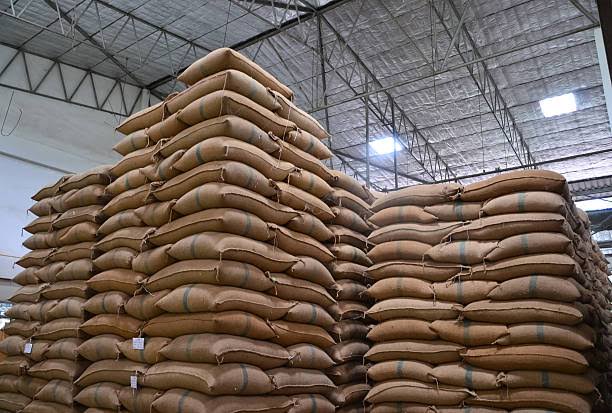
Sustainable solutions for long-term crop preservation are crucial in addressing the growing challenges of food security, climate change, and resource depletion. As the global population continues to rise, the demand for safe, nutritious food increases. Sustainable crop preservation methods can help reduce waste, maintain crop quality, and ensure food availability for future generations.
1. Integrated Pest Management (IPM)
One of the key components of sustainable crop preservation is Integrated Pest Management (IPM). This approach combines various strategies to manage pest populations while minimizing the use of chemical pesticides. Key aspects of IPM include:
1. Cultural Practices: Implementing crop rotation, intercropping, and planting pest-resistant crop varieties can help disrupt pest life cycles and reduce infestations.
2. Biological Control: Utilizing natural predators and parasites to control pest populations is an eco-friendly method that supports biodiversity and reduces reliance on synthetic pesticides.
3. Monitoring and Thresholds: Regular monitoring of pest populations allows farmers to make informed decisions about when to intervene, ensuring that pesticide use is limited to necessary situations.
2. Organic Farming Techniques
Organic farming emphasizes the use of natural inputs and practices that enhance soil health and ecosystem balance. These techniques can significantly contribute to long-term crop preservation:
1. Soil Health Management: Practices such as cover cropping, reduced tillage, and composting improve soil structure, fertility, and water retention, leading to healthier crops that are less susceptible to pests and diseases.
2. Natural Fertilizers: Utilizing organic fertilizers, such as manure or compost, reduces reliance on synthetic fertilizers and enhances soil biodiversity, which contributes to long-term crop health.
3. Crop Diversity: Planting a variety of crops promotes resilience against pests and diseases, reducing the need for chemical interventions.
3. Climate-Smart Agriculture
Climate-smart agriculture (CSA) involves adapting agricultural practices to enhance resilience to climate change while reducing greenhouse gas emissions. CSA strategies for crop preservation include:
1. Water Management: Implementing efficient irrigation systems, such as drip irrigation or rainwater harvesting, helps conserve water and ensures crops receive adequate moisture even during dry spells.
2. Drought-Resistant Crops: Developing and planting drought-resistant crop varieties can enhance food security in regions vulnerable to climate change, ensuring stable yields in challenging conditions.
3. Agroforestry: Integrating trees and shrubs into agricultural landscapes provides multiple benefits, including shade, wind protection, and improved soil quality, all contributing to enhanced crop preservation.
4. Sustainable Storage Solutions
Proper storage is essential for maintaining crop quality and preventing losses during the post-harvest phase. Sustainable storage solutions include:
1. Low-Tech Storage: Traditional storage methods, such as using clay pots or woven baskets, can be effective for smallholder farmers in developing countries. These methods reduce reliance on energy-intensive systems and minimize spoilage.
2. Controlled Atmosphere Storage: For high-value crops, investing in controlled atmosphere storage can significantly extend shelf life by regulating temperature, humidity, and gas composition. This method reduces the need for chemical preservatives and maintains crop quality.
3. Biodegradable Packaging: Utilizing biodegradable packaging materials for storing and transporting crops reduces plastic waste and environmental impact while providing adequate protection for the produce.
5. Community-Based Preservation Practices
Community involvement is crucial for implementing sustainable crop preservation practices. Collaborative approaches can strengthen food security and promote sustainable agriculture:
1. Local Seed Banks: Establishing community seed banks helps preserve local crop varieties, enhancing genetic diversity and resilience against pests and diseases.
2. Knowledge Sharing: Community workshops and training sessions can empower farmers with knowledge about sustainable practices, pest management, and crop preservation techniques.
3. Collective Marketing: Organizing cooperative marketing initiatives allows farmers to sell their crops collectively, reducing waste and ensuring that crops reach consumers efficiently.
6. Technological Innovations
Technological advancements can also play a significant role in enhancing sustainable crop preservation. Key innovations include:
1. Precision Agriculture: Utilizing GPS and data analytics helps farmers monitor crop health, optimize resource use, and make informed decisions about irrigation, fertilization, and pest management.
2. Mobile Apps: Various mobile applications are available to assist farmers in tracking crop conditions, weather patterns, and market prices, facilitating better planning and management.
3. Cold Chain Solutions: Developing cold chain infrastructure, especially in developing regions, ensures that perishable crops maintain their quality from farm to consumer, reducing spoilage and waste.
7. Policy Support and Education
For sustainable crop preservation practices to be effective, supportive policies and education initiatives are essential. Governments and organizations can contribute by:
1. Subsidies and Incentives: Offering financial support for sustainable farming practices encourages farmers to adopt environmentally friendly methods.
2. Research and Development: Investing in research to develop new crop varieties, pest management techniques, and sustainable practices enhances agricultural resilience.
3. Training Programs: Providing farmers with education on sustainable practices, post-harvest handling, and storage techniques ensures that they are equipped with the knowledge needed for successful crop preservation.
8. Sustainable Supply Chains
Developing sustainable supply chains is essential for preserving crop quality and minimizing waste. Strategies include:
1. Shortening Supply Chains: Reducing the distance between producers and consumers minimizes transportation time and preserves crop quality.
2. Direct Marketing: Encouraging farmers to sell directly to consumers through farmers’ markets or community-supported agriculture (CSA) programs fosters sustainable practices and enhances crop value.
3. Transparency and Traceability: Implementing systems for tracking and tracing crops throughout the supply chain promotes accountability and helps identify areas for improvement in preservation practices.
Frequently Asked Questions on Crop Storage Methods and Techniques
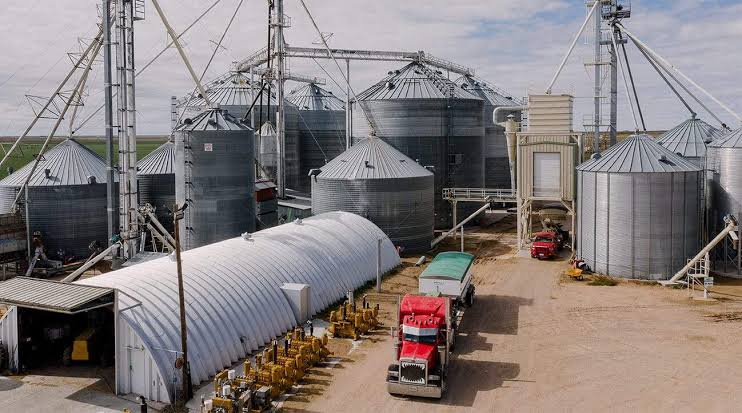
1. What are the main goals of crop storage?
The primary goals of crop storage are to maintain the quality and safety of harvested crops, reduce post-harvest losses, and ensure food security. Proper storage helps prevent spoilage, pest infestations, and contamination, ensuring that crops retain their nutritional value and marketability.
2. What factors should be considered when choosing a storage method?
When selecting a storage method, consider factors such as the type of crop, its moisture content, the intended storage duration, environmental conditions, and available resources. Understanding these factors helps determine the most suitable storage technique, whether it be temperature-controlled storage, traditional methods, or advanced technologies.
3. What are some common crop storage methods?
Common crop storage methods include:
- Controlled Atmosphere Storage: Regulates temperature, humidity, and gas composition to extend shelf life.
- Refrigerated Storage: Maintains low temperatures for perishable items like fruits and vegetables.
- Grain Silos: Used for bulk storage of grains, providing protection against pests and moisture.
- Root Cellars: Utilize natural coolness and humidity to store root vegetables.
- Dry Storage: For grains and legumes, ensuring low moisture levels to prevent spoilage.
4. How does temperature affect crop storage?
Temperature plays a critical role in the storage of crops. Higher temperatures can accelerate respiration rates, leading to spoilage, while lower temperatures help slow down these processes. Each crop has specific temperature requirements for optimal storage; for example, most vegetables benefit from refrigeration, while grains should be stored in cool, dry conditions.
5. Why is humidity control important in crop storage?
Humidity control is essential to prevent mold growth and spoilage. High humidity levels can lead to fungal infections and other quality issues, while low humidity can cause crops to dry out and lose weight. Maintaining optimal humidity levels ensures that stored crops remain in good condition and reduces the risk of losses.
6. How can pests be managed during crop storage?
Effective pest management during storage involves a combination of preventive and control measures. Strategies include:
- Regular Inspections: Monitor stored crops frequently for signs of pest activity.
- Sanitation: Keep storage areas clean and free from debris that can harbor pests.
- Physical Barriers: Use traps, screens, or airtight containers to protect crops from pests.
- Integrated Pest Management (IPM): Employ natural predators and biological controls to manage pest populations sustainably.
7. What are the benefits of using biodegradable packaging for stored crops?
Biodegradable packaging offers several benefits, including reducing plastic waste, minimizing environmental impact, and providing adequate protection for crops. These materials break down naturally, contributing to a more sustainable agricultural practice. Additionally, they can help maintain moisture levels and protect crops from physical damage during storage and transportation.
8. How can technology enhance crop storage methods?
Technology plays a vital role in improving crop storage methods. Innovations such as smart storage systems equipped with sensors allow for real-time monitoring of temperature and humidity, enabling timely adjustments. Additionally, mobile applications help farmers track crop conditions and market prices, facilitating better planning and management.
9. What is the significance of record-keeping in crop storage?
Maintaining accurate records of crop storage conditions, treatments applied, and pest management strategies is essential for evaluating the effectiveness of storage methods. Analyzing these records helps farmers identify patterns, make informed decisions, and improve practices for future harvests, ultimately leading to better crop preservation and reduced losses.
10. How can farmers ensure they are using the best storage practices?
Farmers can ensure they are using the best storage practices by staying informed about the latest research and advancements in crop storage techniques. Participating in workshops, seeking advice from agricultural extension services, and collaborating with other farmers can provide valuable insights and resources to enhance storage methods and improve overall crop quality.
Read Also: Easy Gluten-Free Recipes
Do you have any questions, suggestions, or contributions? If so, please feel free to use the comment box below to share your thoughts. We also encourage you to kindly share this information with others who might benefit from it. Since we can’t reach everyone at once, we truly appreciate your help in spreading the word. Thank you so much for your support and for sharing!

